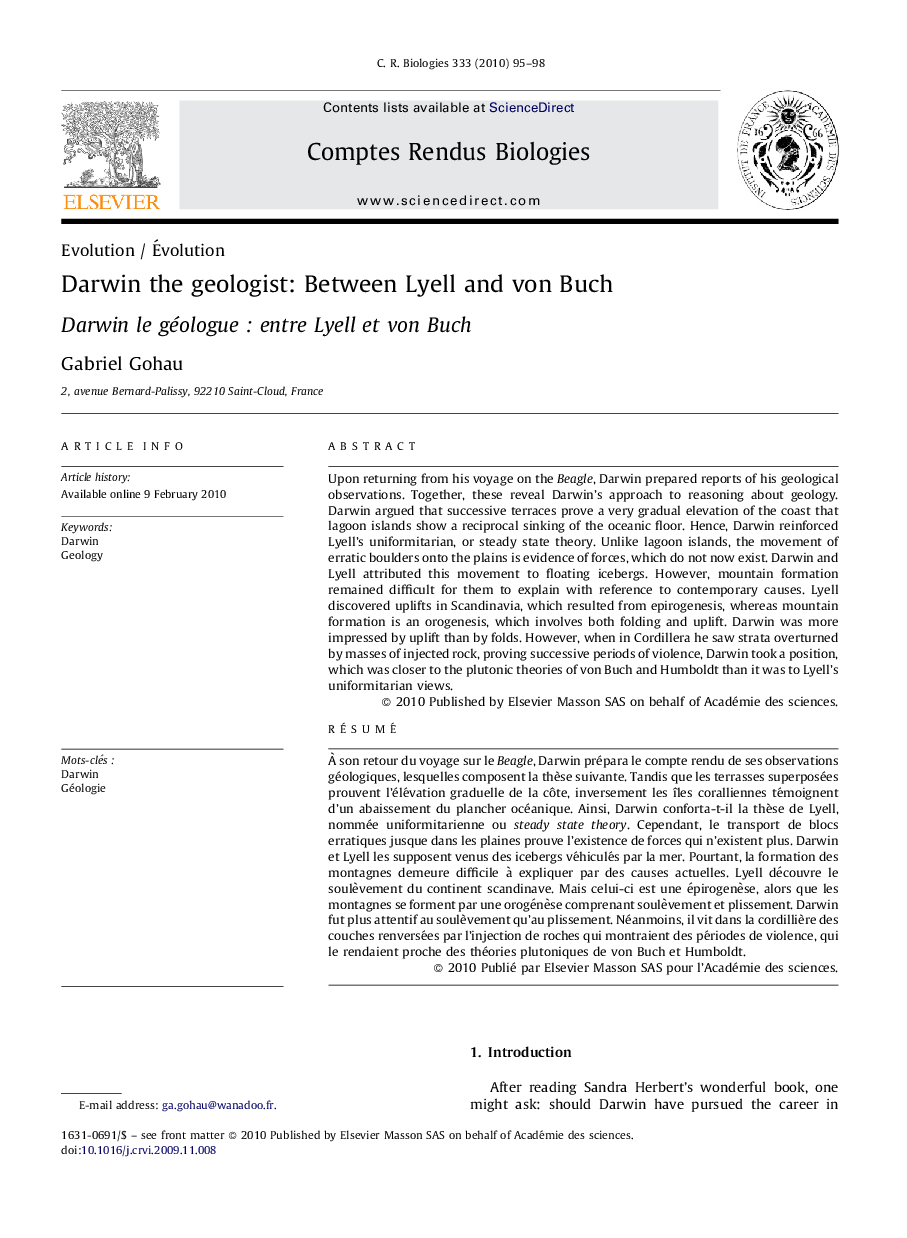| کد مقاله | کد نشریه | سال انتشار | مقاله انگلیسی | نسخه تمام متن |
|---|---|---|---|---|
| 2784053 | 1153791 | 2010 | 4 صفحه PDF | دانلود رایگان |

Upon returning from his voyage on the Beagle, Darwin prepared reports of his geological observations. Together, these reveal Darwin's approach to reasoning about geology. Darwin argued that successive terraces prove a very gradual elevation of the coast that lagoon islands show a reciprocal sinking of the oceanic floor. Hence, Darwin reinforced Lyell's uniformitarian, or steady state theory. Unlike lagoon islands, the movement of erratic boulders onto the plains is evidence of forces, which do not now exist. Darwin and Lyell attributed this movement to floating icebergs. However, mountain formation remained difficult for them to explain with reference to contemporary causes. Lyell discovered uplifts in Scandinavia, which resulted from epirogenesis, whereas mountain formation is an orogenesis, which involves both folding and uplift. Darwin was more impressed by uplift than by folds. However, when in Cordillera he saw strata overturned by masses of injected rock, proving successive periods of violence, Darwin took a position, which was closer to the plutonic theories of von Buch and Humboldt than it was to Lyell's uniformitarian views.
RésuméÀ son retour du voyage sur le Beagle, Darwin prépara le compte rendu de ses observations géologiques, lesquelles composent la thèse suivante. Tandis que les terrasses superposées prouvent l’élévation graduelle de la côte, inversement les îles coralliennes témoignent d’un abaissement du plancher océanique. Ainsi, Darwin conforta-t-il la thèse de Lyell, nommée uniformitarienne ou steady state theory. Cependant, le transport de blocs erratiques jusque dans les plaines prouve l’existence de forces qui n’existent plus. Darwin et Lyell les supposent venus des icebergs véhiculés par la mer. Pourtant, la formation des montagnes demeure difficile à expliquer par des causes actuelles. Lyell découvre le soulèvement du continent scandinave. Mais celui-ci est une épirogenèse, alors que les montagnes se forment par une orogénèse comprenant soulèvement et plissement. Darwin fut plus attentif au soulèvement qu’au plissement. Néanmoins, il vit dans la cordillière des couches renversées par l’injection de roches qui montraient des périodes de violence, qui le rendaient proche des théories plutoniques de von Buch et Humboldt.
Journal: Comptes Rendus Biologies - Volume 333, Issue 2, February 2010, Pages 95–98